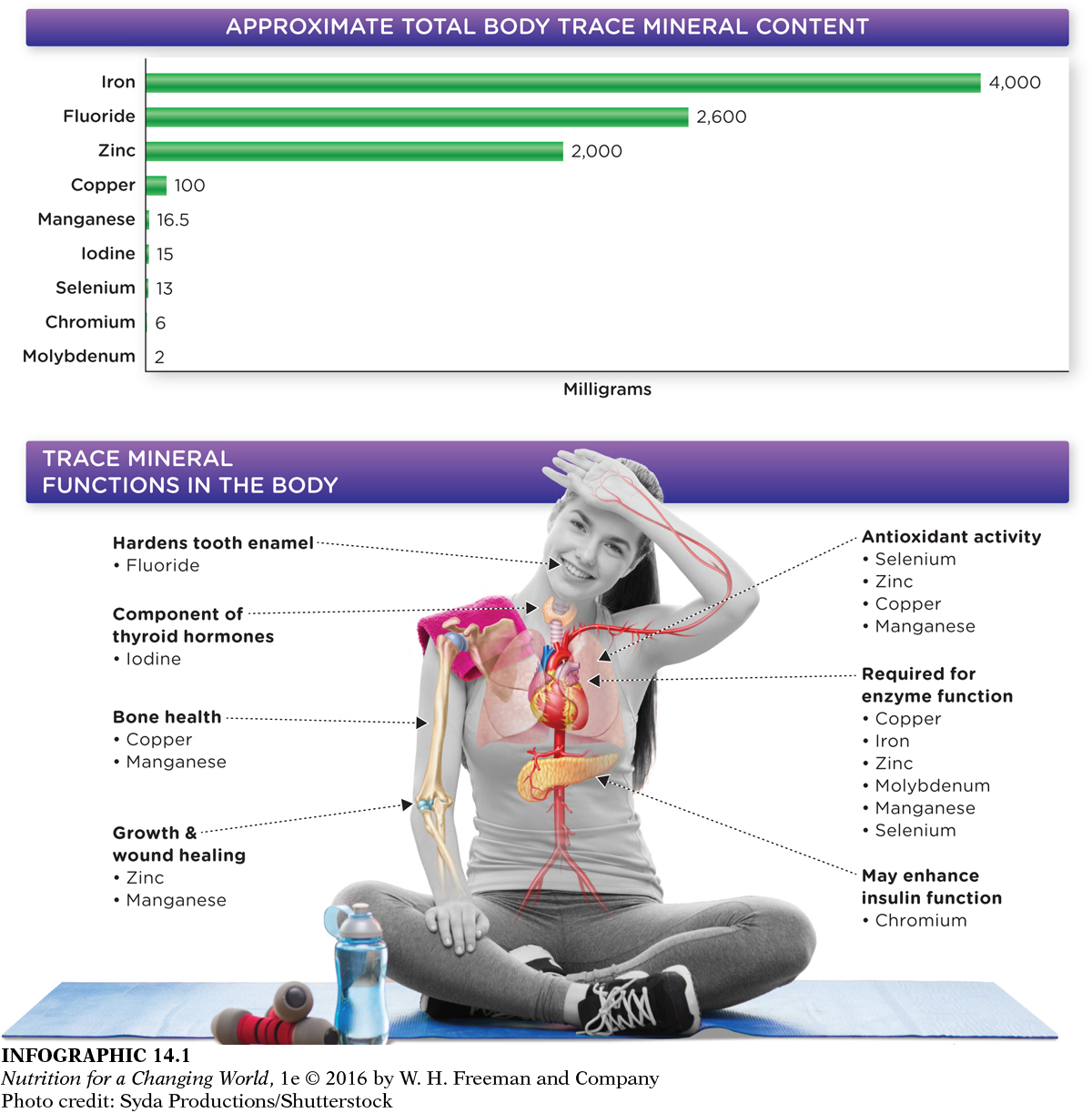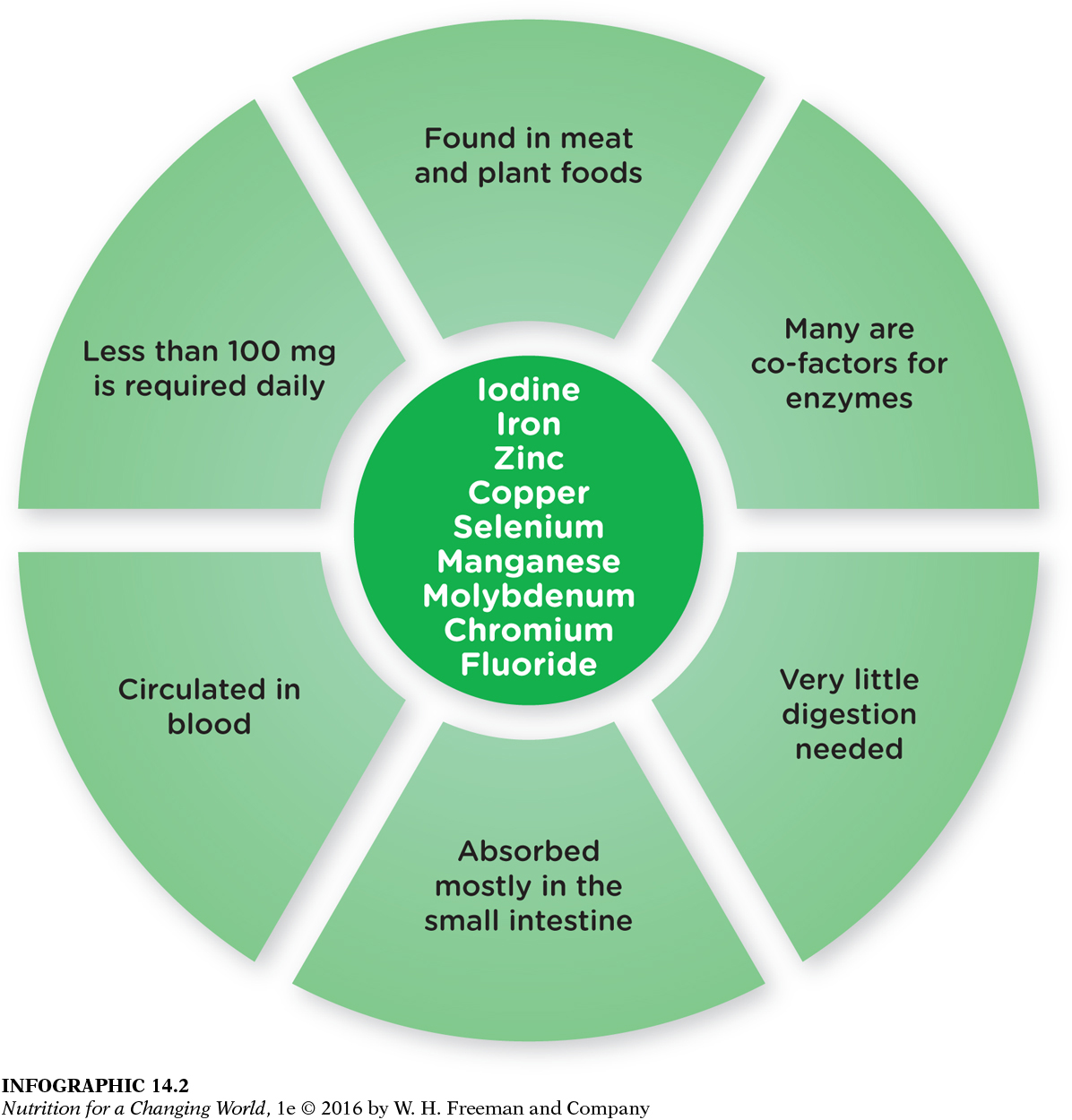INTRODUCING THE TRACE MINERALS
TRACE MINERALS minerals with a daily requirement of less than 100 milligrams (sometimes called microminerals)
Iodine is categorized as one of the trace minerals, because the body requires significantly less of them to meet daily needs than the major minerals. (Trace minerals are also found in smaller amounts in the body.) Minerals with a daily requirement of 100 milligrams or more are considered major (or “macro”) minerals, while those with a daily requirement less than 100 milligrams are considered trace (or “micro”) minerals. In addition to iodine, the other essential trace minerals are iron, zinc, copper, selenium, molybdenum, manganese, and chromium. Fluoride is another important trace mineral that is required for optimal health, but because it is not required to sustain life it is not considered an essential nutrient. (INFOGRAPHIC 14.1)

Syda Productions/Shutterstock
CO-FACTOR nonprotein inorganic substances that enable enzymes to carry out chemical reactions
Although the body doesn’t need large amounts of the trace minerals, they are crucial for health. Trace minerals often act as co-factors by binding to enzymes, enabling them to carry out their chemical reactions. Trace minerals are also incorporated into other types of proteins in addition to enzymes; iron, for example, is a component of the oxygen-carrying protein in red blood cells called hemoglobin. Trace minerals also serve other roles. Fluoride, for example, has an important structural function in that it hardens the enamel on our teeth, reducing the occurrence of dental caries.
Page 313
Trace minerals are found in plant-based and animal-based foods, but their bioavailability—the extent to which a mineral can be used by the body—can be influenced by many factors, including the form of the food, our nutrition status, our age, and pregnancy status. The safe range of intake for trace minerals is also narrow compared with the major minerals, since they are required in such small amounts. Trace mineral deficiencies can cause vague or varied symptoms that are difficult to diagnose; but, sometimes, inadequacies have severe and even deadly consequences. Pregnant women and children in rapid growth stages are especially affected by inadequate intakes of trace minerals. As with the vitamins and major minerals, it is rare for individuals to overconsume trace minerals through food alone, but intake above the Tolerable Upper Intake Level (UL) is possible through supplementation, resulting in potentially dangerous adverse effects. For example, excess selenium can result in hair loss and brittle nails and in extreme cases, respiratory distress along with kidney and heart failure. In general, by eating a balanced and varied diet, we can get all the trace minerals we need without excess intake. (INFOGRAPHIC 14.2)
Page 314
Although the problems with iodine deficiency are most pronounced in developing countries, the United States and other westernized nations are not exempt. In 2006, nearly half of all pregnant American women’s diets were estimated to be deficient in the mineral according to World Health Organization intake recommendations. These low intakes are a major problem considering that iodine deficiency during pregnancy can lower fetal IQ to the point of causing mental retardation.

To combat goiters, the Morton Salt Company fortified its salt with iodide. Iodide is the ion and transport form of iodine in the body.
Mary Evans Picture Library/Alamy


